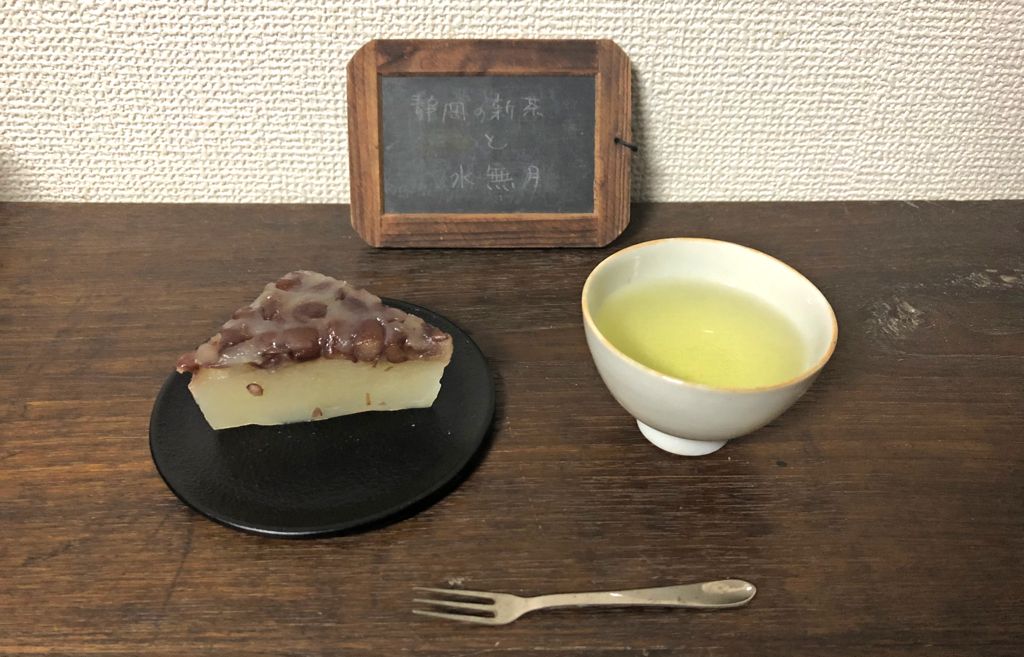July 2019 – Organic Shincha from Kawane
For the month of July we prepared another organic Shincha (新茶), of type Sencha (煎茶), from the region of Kawane (川根) in the prefecture of Shizuoka (静岡).
Second organic Shincha of the year
After the Shincha from Tanegashima in southern Japan, we are moving up to the middle of Japan, more precisely to Kawane in the prefecture of Shizuoka for another Shincha. The Shizuoka prefecture is the number one producer of green tea in Japan, and Kawane region is famous for high quality tea, as well as organic tea harvested by hand. Tea from Kawane usually has a transparent clear green color, a savory aroma, and a strong yet soft taste from the nature of mountain.
Shincha is normally harvested on the 88th day (around the beginning of May), counting from the beginning of spring (around the beginning of February) according to the lunar calendar. 8 is a lucky number for Japanese who believe in superstitions. 8 is written 八 in Japanese. The shape of the character reminds us of the shape of a mountain (like Mount Fuji), or a reversed folding fan, and gives us an image of something spreading infinitely. In other words, it brings good luck (twice, as a double 8). Moreover, if you lay down 8, it becomes ∞ infinity! Long story short, if you drink Shincha, you can live long, safe and secure.
Since the tea plantation of this producer is located at an altitude of 630 meters (2000 feet), the first harvest there is delayed. Temperature between day and night is dramatically different, perfect to make a good and scented tea. The producer completely stopped using any insecticide 35 years ago!
The tea is produced according to the Futsūmushi method (普通蒸し), or “normal steaming”. It is half-way between the Asamushi method (浅蒸し - light and short steaming) and Fukamushi method (深蒸し - deep and long steaming). This tea has a good balance for aroma, umami, sweetness and bitterness. On the other hand, this Shincha has quite a bit more caffeine than other Senchas, so the producer recommends not to drink it late at night. Using soft water is also very recommended.
If you still have Shincha from Tanegashima, you can compare it with this Shincha. In my opinion, the Shincha from Kawane has more bitterness and taste. I found a perfect match for this Shincha with a lucky sweet. The cake which I chose is only for the month of June, and is called “Minazuki (水無月)”, which means the "month of water" because of the rainy season in Japan. Or conversely it can mean the "month without water" because we plant rice during this month, which requires huge amount of water to irrigate the rice fields. Anyhow, I will have a good year thanks to this perfect marriage.

Summer Purification Rites
In Japan, there is a rite called Nagoshi no Harae (夏越の祓え), which can be translated as “Summer Purification Rites”. People go to a Shinto shrine on June 30th in order to pass through a large woven ring of thatch, called Chinowa (茅の輪), placed in the front of shrine, wishing a good health, a good luck, prosperity and especially a purification for avoiding evil spirits. Ancient people worried about summer, since it was the season of epidemic. That is the reason why there are many festivals from this moment everywhere in Japan in order to get rid of evil spirits.
We also eat a sweet as explained above in this article. The cake has the shape of a block of ice, because in the Middle Ages in Japan there was a tradition of bringing ice from ice rooms built in mountains for the aristocracy. They could refresh themselves with ice, however ordinary people had no access to it as it was very expensive. Therefore, they created a sweet called “Minazuki (水無月)”, adding red beans because red is a color which protects us from evil.
Brewing Shincha
The amount of tealeaves should be adapted according to the desired taste: it should be around a tablespoon (8 to 9 grams) of Shincha for 180ml (6oz) of spring water. The infusion should last 60 seconds in water at 70ºC (160ºF). Note that over-infusion of more than 2 minutes may produce a tea containing a lot of caffeine. The second infusion should be done more quickly than the first one. We can use the same leaves up to 2 times.
You can also taste cold Shincha. Put 1 liter of water with 15 grams of tealeaves to chill in a refrigerator overnight. Enjoy your Shincha of Kawane!
